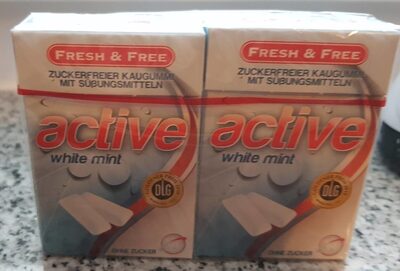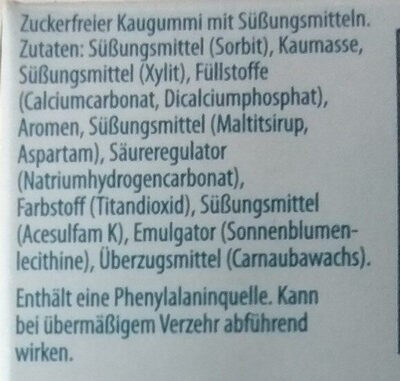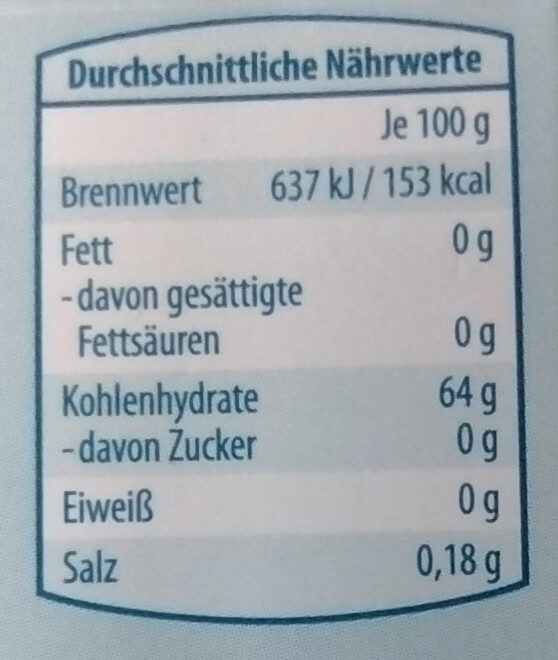Active - FRESH & FREE - 72g (2x36g)
This product page is not complete. You can help to complete it by editing it and adding more data from the photos we have, or by taking more photos using the app for Android or iPhone/iPad. Thank you!
×
Barcode: 4061458018470 (EAN / EAN-13)
Quantity: 72g (2x36g)
Packaging: Paper, de:Kunststofffolie
Brands: FRESH & FREE
Categories: Snacks, Sweet snacks, Confectioneries, Chewing gum, Sugar-free chewing gum
Labels, certifications, awards:
German Agricultural Society, Gold medal of the German Agricultural Society, 2018 Gold medal of the German Agricultural Society, Contains a source of phenylalanine, FSC, FSC Mix, de:FSC C117830

Manufacturing or processing places: Dänemark
Traceability code: FSC-C117830
Countries where sold: Germany
Matching with your preferences
Report a problem
Data sources
Product added on by tomtactom
Last edit of product page on by jayaddison.
Product page also edited by kiliweb, openfoodfacts-contributors, packbot, roboto-app, standardanalysis, yuka.sY2b0xO6T85zoF3NwEKvllNrAofAsx_gJTfls1aHn-2WIZuwRIoiw5Kna6s.











